The Brown Noddy is an attractive seabird that graces the skies and shores of tropical and subtropical oceans worldwide. In this journey of discovery, we embark on a quest to unravel the mysteries surrounding this charming avian species.
The Brown Noddy, scientifically known as Anous stolidus, enchants with its graceful flight and distinctive appearance. Its chocolate-brown plumage, striking white cap, and piercing black eyes cast a spell on all encountering it in its coastal habitats.
Join us as we delve into the fascinating life history, behaviors, and ecological significance of the Brown Noddy.
From its remarkable adaptations for life at sea to its role as a symbol of resilience in the face of environmental challenges, each aspect of its existence offers insights into the intricate tapestry of life in the world’s oceans. Prepare to be captivated by the allure of the Brown Noddy.
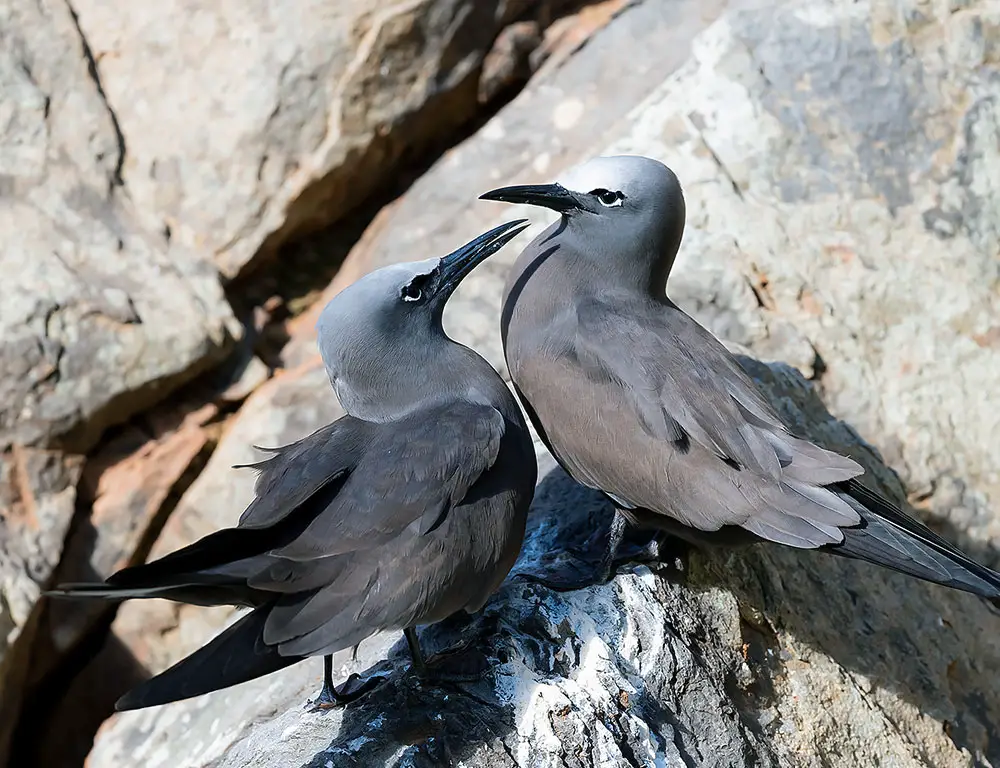
Identifying Characteristics of Brown Noddy
In this section, we delve into the identifying characteristics of the Brown Noddy, shedding light on its physical features, habitat preferences, and remarkable adaptations for life at sea.
Physical Appearance
The Brown Noddy is a medium-sized seabird with approximately 65 to 70 centimeters wingspan. It has a chocolate-brown plumage on the upper parts, contrasting with a lighter underbelly.
One of the most striking features of the Brown Noddy is its distinctive white cap, which extends from the forehead to the nape of the neck. This white cap is especially prominent during the breeding season.
Bill and Feet
The Brown Noddy has a slender, slightly curved bill, ideally suited for capturing small fish and invertebrates from the ocean surface. Its bill is dark in color, often appearing black or dark gray.
Its feet are webbed, facilitating efficient swimming and diving while foraging for food underwater. The webbing also aids in maneuvering during takeoff and landing on water.
Flight and Behavior
In flight, the Brown Noddy exhibits graceful, buoyant movements, rapid wing beats, and agile maneuvers. It is often seen effortlessly gliding over the ocean surface or circling above feeding areas.
When foraging, the Brown Noddy employs various techniques, including plunge diving, aerial pursuit, and surface skimming. It feeds primarily on small fish, squid, and crustaceans near the water’s surface.
Vocalizations
The Brown Noddy is relatively silent at sea but becomes more vocal during the breeding season. Its calls are typically soft, nasal “kak-kak” or “noddy-noddy” sounds, often used for mate attraction and territorial communication.
Breeding Plumage
During the breeding season, adult Brown Noddies may exhibit subtle changes in plumage coloration, with the brown upperparts appearing richer and more glossy. The white cap also becomes more pronounced as a visual cue during courtship displays.
Foraging and Feeding
Brown Noddies are adept aerial hunters, relying on their keen eyesight to spot prey from above. They primarily feed on small fish, squid, and crustaceans, which they capture by plunge diving or surface skimming.
In addition to hunting for food at sea, Brown Noddies may opportunistically feed on scraps or discards from fishing vessels, scavenging for offal and discarded bait.
Roosting and Resting
Brown Noddies may gather in large flocks to roost and rest on offshore islands, rocky outcrops, or coastal cliffs outside of the breeding season. These roosting sites protect from predators and shelter from adverse weather conditions.
Migration and Dispersal
Brown Noddies are highly migratory birds, undertaking long-distance migrations between breeding and non-breeding grounds. They may travel thousands of kilometers across the open ocean, following seasonal changes in food availability and environmental conditions.
Social Structure
Brown Noddies are generally social birds, often congregating in large colonies during breeding.
Within these colonies, they engage in courtship displays, territorial disputes, and cooperative behaviors such as communal defense against predators.
Taxonomy, Distribution, and Breeding Habits of the Brown Noddy
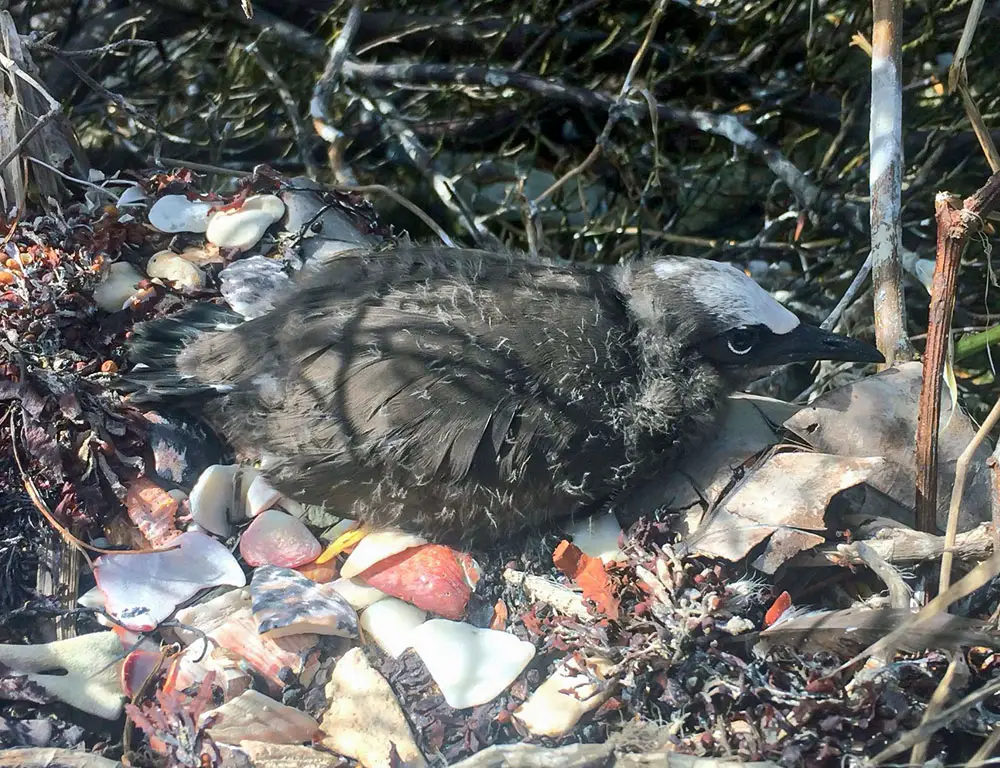
Embark on a journey to uncover the intricate nesting habits and breeding behaviors of the Brown Noddy, a fascinating seabird that prefers coastal habitats and remote islands.
Explore the secrets of its nesting rituals as we delve into the details below.
Taxonomy of the Brown Noddy
| Taxonomy Level | Classification |
| Kingdom | Animalia |
| Phylum | Chordata |
| Class | Aves |
| Order | Charadriiformes |
| Family | Laridae |
| Genus | Anous |
| Species | Anous stolidus |
Distribution of the Brown Noddy
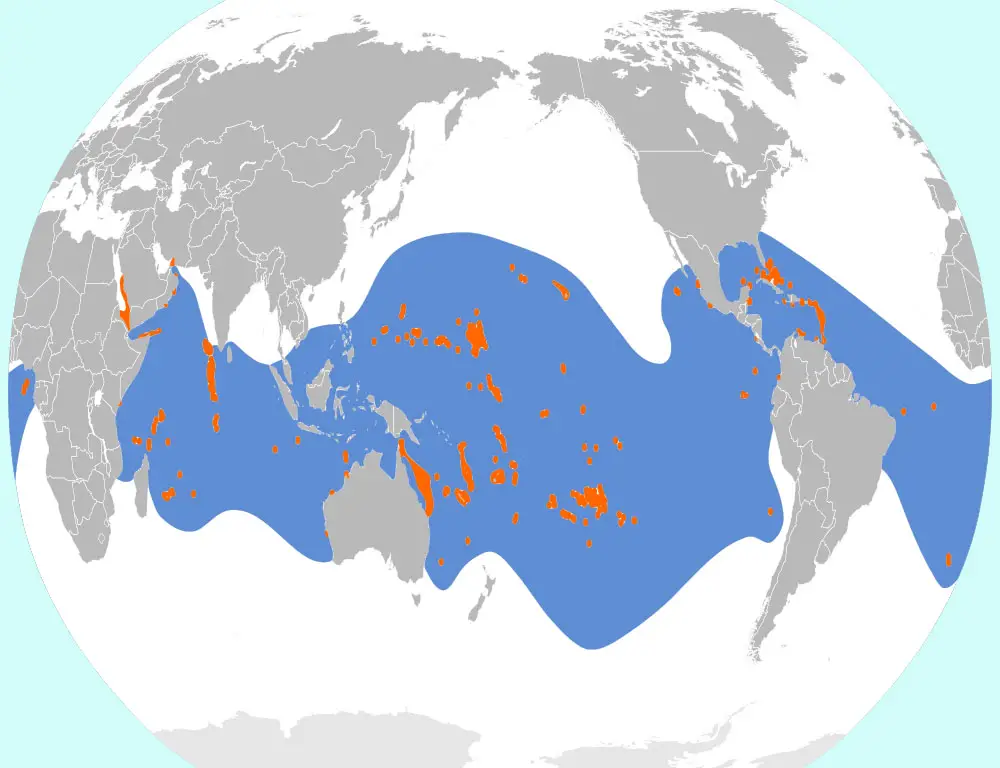
The Brown Noddy has a wide distribution across tropical and subtropical regions, including the Pacific, Indian, and Atlantic Oceans.
It breeds on remote islands and atolls in the tropics, with significant populations in the Caribbean, the Hawaiian Islands, the Seychelles, and the Great Barrier Reef.
Nesting Habits of the Brown Noddy
| Nesting Behavior | Description |
| Nest Site Selection | Brown Noddies typically select nesting sites on offshore islands, rocky cliffs, or coastal vegetation. |
| Nest Construction | Nests are simple structures of twigs, grasses, and feathers, often placed in low shrubs or rocky ledges. |
| Incubation | Both parents share incubation duties, keeping the eggs warm until they hatch. |
| Chick Rearing | After hatching, chicks are fed a regurgitated fish and squid diet by both parents until they fledge. |
| Fledging | Brown Noddy chicks fledge (become independent) approximately 35 to 40 days after hatching. |
Breeding Habits of the Brown Noddy
Brown Noddies typically breed in large colonies on offshore islands, rocky cliffs, or coastal vegetation. Breeding occurs in the warmer months of the year, with nesting sites often located in areas with minimal terrestrial predators.
Both parents participate in nest building, incubation, and chick-rearing duties. The nest is a simple structure of twigs, grasses, and feathers constructed in low shrubs or rocky ledges.
Conservation Status of the Brown Noddy
The Brown Noddy holds a conservation status of Least Concern, indicating a relatively stable population and minimal threat of extinction.
This status suggests current conservation efforts are sufficient to maintain their numbers, ensuring their continued presence in their habitats.
What Are the Common Diseases and Treatments of the Brown Noddy?
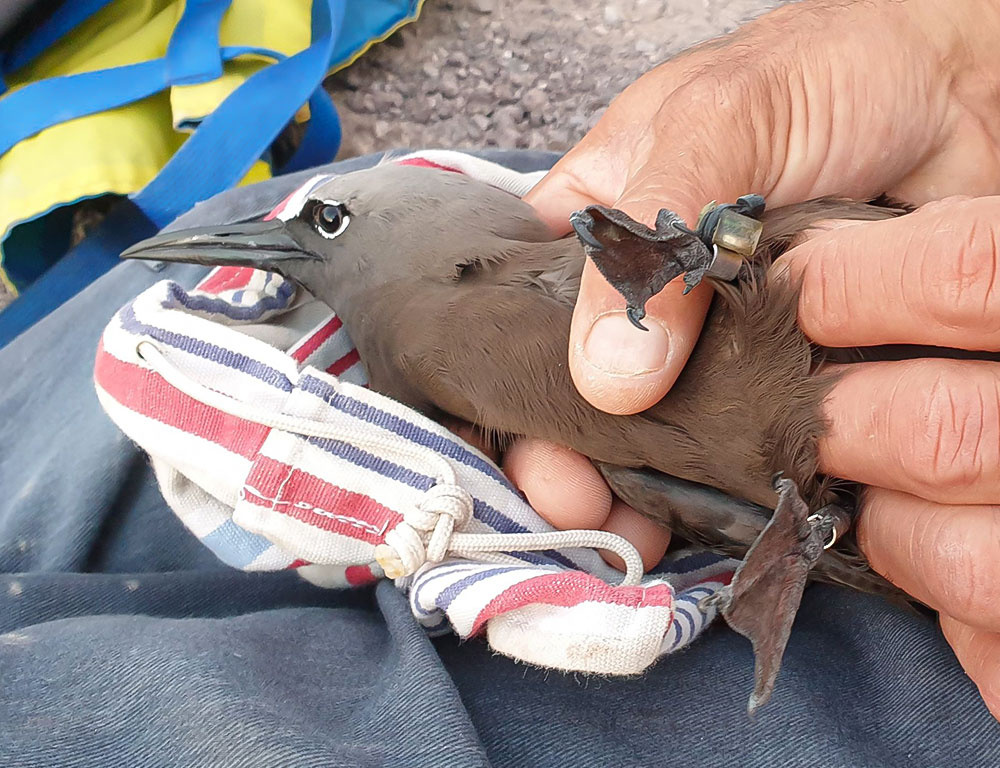
While seabirds like the Brown Noddy are generally resilient to diseases, they can still be susceptible to certain health issues in their coastal and marine habitats.
Let’s explore some common diseases that may affect Brown Noddies and the treatments available to mitigate their impact:
Avian Pox
Avian pox is a viral disease affecting seabird populations, including Brown Noddies. It manifests as wart-like growths on the skin, beak, and feet, impairing the bird’s ability to feed and move. Treatment may involve supportive care to boost the bird’s immune system and reduce discomfort.
Aspergillosis
Aspergillosis is a fungal infection caused by the Aspergillus fungus, which is commonly found in soil and decaying organic matter. In seabirds, inhaling fungal spores can lead to respiratory distress and pneumonia.
Treatment may involve antifungal medications and supportive therapy to alleviate symptoms.
Injuries
Brown Noddies may sustain injuries such as fractures, wounds, and abrasions due to collisions with objects or predators. Treatment may include wound cleaning, antibiotics to prevent infection, and supportive care to promote healing.
Parasitic Infestations
Parasitic infestations, such as lice, mites, and ticks, can affect the plumage and overall health of Brown Noddies. External parasites may cause irritation, feather damage, and skin lesions.
Treatment options include topical insecticides, bathing to remove parasites, and habitat management to reduce parasite populations.
Nutritional Deficiencies
Inadequate nutrition can compromise the health and vitality of Brown Noddies, particularly during periods of food scarcity or environmental stress.
Common nutritional deficiencies may include vitamin imbalances, mineral deficiencies, and protein malnutrition. Treatment involves dietary supplementation and the provision of balanced nutrition to meet the bird’s requirements.
Environmental Toxins
Brown Noddies may be exposed to environmental toxins such as heavy metals, pesticides, and oil spills, which can harm their health.
Treatment involves minimizing exposure to contaminated environments and providing supportive care to mitigate the effects of toxin ingestion.
Monitoring and Research
Given the remote and challenging nature of their habitat, monitoring the health of Brown Noddy populations is essential for early detection and disease management.
Research efforts focused on disease surveillance, population health assessments, and understanding the impact of environmental stressors are crucial for effective conservation and management of seabird populations.
6 Interesting Facts About the Brown Noddy
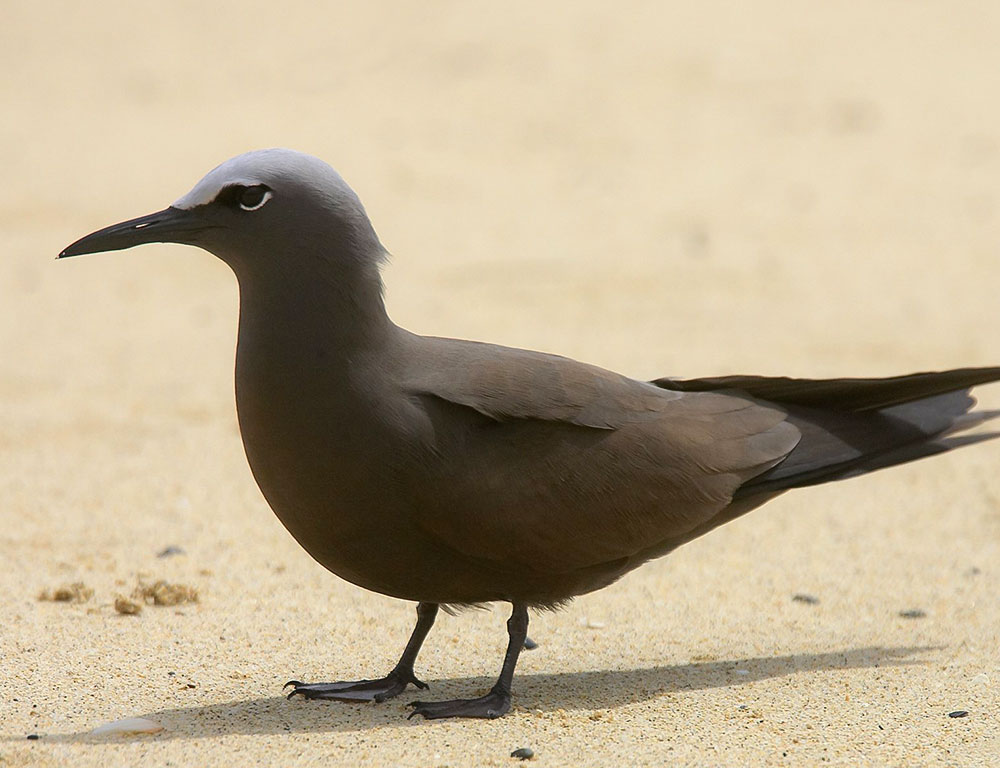
Delve into the fascinating world of the Brown Noddy and uncover six intriguing facts about this charismatic seabird species.
From its remarkable behaviors to its unique adaptations for life at sea, the Brown Noddy never fails to captivate the imagination of bird enthusiasts worldwide.
1. Navigational Expertise
Brown Noddies are skilled navigators capable of long-distance migrations across vast stretches of open ocean. They rely on celestial cues, landmarks, and ocean currents to precisely guide their journeys.
2. Kleptoparasitic Feeding
Brown Noddies exhibit kleptoparasitic behavior, stealing food from other seabirds by harassing them until they regurgitate their meals.
This opportunistic feeding strategy allows them to obtain nutrients without the effort of hunting.
3. Colonial Nesting
Brown Noddies are colonial nesters, forming large breeding colonies on remote islands and coastal cliffs.
These colonies can consist of thousands of individuals, providing safety in numbers and facilitating cooperative behaviors such as communal defense against predators.
4. Courtship Displays
Brown Noddies engage in elaborate courtship displays during the breeding season to attract mates. These displays may include aerial acrobatics, synchronized flights, and vocalizations, showcasing the birds’ agility and vitality.
5. Monogamous Pairing
Brown Noddies form monogamous breeding pairs during the breeding season, with individuals often returning to the same nesting sites and mating with the same partners year after year. This fidelity to their mates helps strengthen social bonds and ensure reproductive success.
6. Adaptations for Marine Life
Brown Noddies have evolved several adaptations for life at sea, including streamlined bodies for efficient flight, waterproof plumage to repel water, and webbed feet for agile swimming and diving.
These adaptations enable them to thrive in their oceanic habitat and easily exploit marine resources.
FAQs
Where Do Brown Noddies Nest?
Brown Noddies typically nest in large colonies on remote islands, rocky cliffs, or coastal vegetation in tropical and subtropical regions worldwide.
These nesting sites protect from terrestrial predators and access to abundant food resources in nearby waters.
What Do Brown Noddies Eat?
Brown Noddies feed on small fish, squid, crustaceans, and other marine prey near the water’s surface. They use various hunting techniques such as plunge diving, aerial pursuit, and surface skimming to capture their prey while in flight.
Are Brown Noddies Endangered?
Brown Noddies are currently classified as a species of most minor concern on the International Union for Conservation of Nature (IUCN) Red List.
While they may face localized threats such as habitat degradation and predation on some islands, overall populations remain stable and widespread.
How Do Brown Noddies Communicate?
Brown Noddies communicate through vocalizations, body postures, and visual displays. During the breeding season, they may engage in courtship calls and displays to attract mates and establish territories within breeding colonies.
What Are the Migration Patterns of Brown Noddies?
Brown Noddies are highly migratory birds that undertake long-distance migrations between breeding and non-breeding grounds. Following seasonal changes in food availability and environmental conditions, they may travel thousands of kilometers across the open ocean.
Conclusion
The Brown Noddy, with its resilient population and Least Concern conservation status, stands as a testament to the success of conservation efforts thus far.
Its ability to thrive in diverse marine environments reflects its adaptability and resilience in the face of environmental challenges.
However, continued monitoring and conservation measures are necessary to safeguard this species against potential future threats, such as habitat loss, pollution, and climate change.
By preserving their nesting sites, protecting marine habitats, and promoting sustainable fishing practices, we can ensure the long-term survival of the Brown Noddy and maintain the ecological balance of the marine ecosystems it inhabits.
With concerted efforts and dedication to conservation, we can uphold the legacy of the Brown Noddy as a symbol of resilience and biodiversity in our oceans for generations to come.